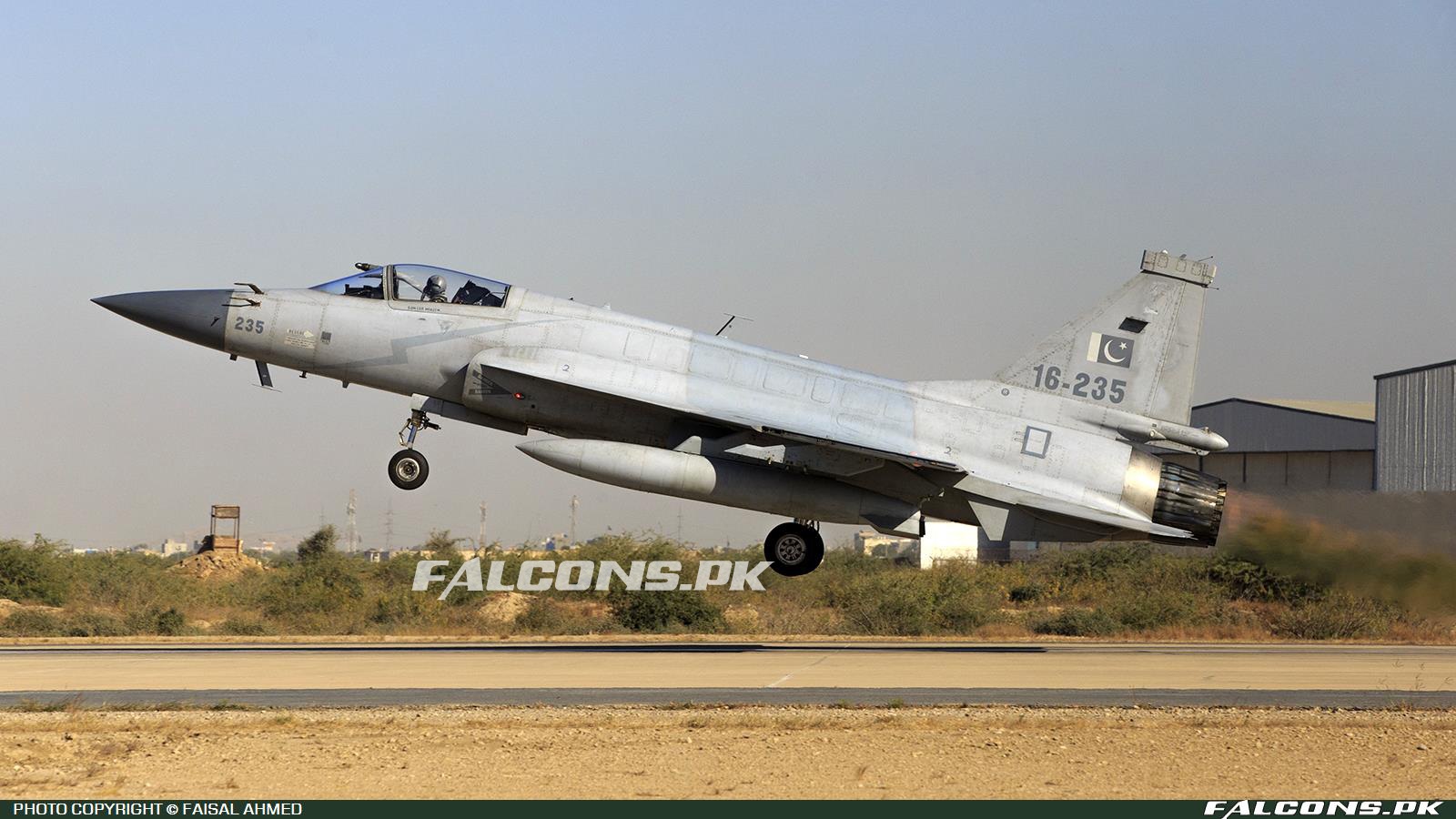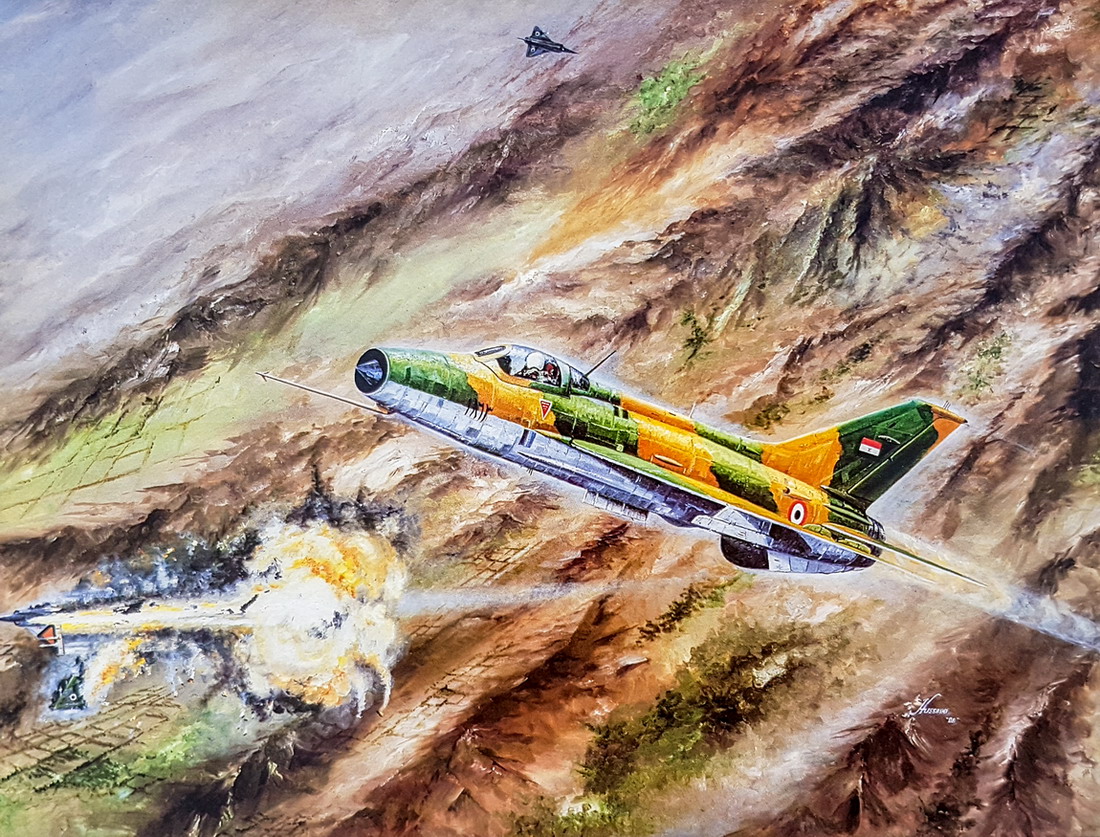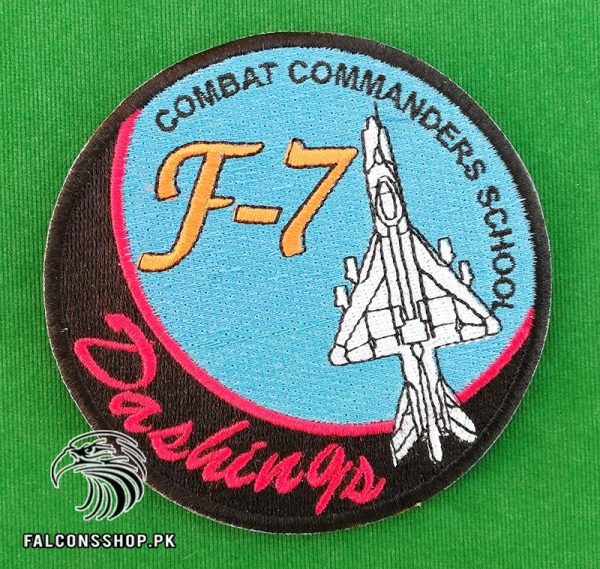If ever there was an aircraft that dominated the hopes of a nation, it has to be Pakistan’s JF-17 Thunder, as Alan Warnes reports
By Alan Warnes – Airforces Monthly
Born from sanctions in the early 1990s, the Pakistan Air Force (PAF), in a joint venture with AVIC (Aviation Industry in China), has been building its own fighter for over 12 years now. Pakistan Aeronautical Complex (PAC) Kamra builds 58% of each JF-17, with 42% made by Chengdu in China. As an outsider, with privileged access looking in, the Sino-Pak partnership appears to work well, even if at times it has been strained, like most marriages.
Dual-seater version
The latest episode in the JF-17 story was completed on December 31 last year, when the PAC chairman, Air Marshal Syed Noman Ali, handed over a batch of 14 dual-seat JF-17B Thunders to the PAF. Built by the PAC’s Aircraft Manufacturing Factory (AMF), they followed an initial 12 delivered on December 30, 2019.
The PAF will be training pilots in the JF-17B, once they are delivered to 18 ‘Sharp Shooters’ Squadron, the JF-17 operational conversion unit (OCU). Until now, pilots had gone through conversion courses with both 16 ‘Black Panthers’ Sqn and 26 ‘Black Spiders’ Sqn’.
The experienced pilots came from diverse backgrounds, either flying F-16s, F-7PGs or ROSE 1 Mirages, equipped with air-to- air radars. The downside was that the pilots were much older than those coming fresh out of the 1st Fighter Conversion Unit, flying K-8Ps.
This is where newly-graduated PAF pilots, destined to fly fighter jets, go after leaving the PAF’s Asghar Khan Academy at Risalpur. It’s a win-win situation for the PAF because, in addition to flying training, JF-17Bs can also be used for tactical training, and once the aircraft has been upgraded with the new CETC KLJ-7A active electronically scanned array (AESA) radar, it will be a very capable tactical dual-seater.
China’s Chengdu Aerospace Corporation announced on April 27, 2016, that production of a two-seater JF-17B had officially commenced. Speaking at the occasion, Air Marshal Muhammad Iqbal, the then chief project director (CPD) for the JF-17, explained the importance of a dual-seater: “The JF-17 will not only enhance our training value, but also our operational capability. The induction of a dual seater will also improve its export prospects in future.
“Ordering 26 Block 2 JF-17Bs in 2016 was a complete turnaround for the PAF, because until then I had always been told by senior personnel, including several PAF Commanders, that there was no need. We flew the [Chinese built] A-5, F-6 and F-7s for many years without the need of a dual seater, and with a good simulation system it isn’t a priority.”
In those days, the PAF was not trying to sell the fighter. This changed, however, and now most countries want a dual-seat version for pilot training – particularly in the Middle East, Asia, and Africa, where PAC and AVIC are marketing the jet. assisting the test and development programme, including weapons integration, so the two-seater’s operational capabilities will match the single-seater’s.
The first JF-17B, 17-601, arrived at PAC Kamra in early 2019, followed later that year by 19-602. In April 2019, 17-601 was upgraded with a new air-to-air refueling (AAR) system. All the JF-17Bs have the AAR hosing, but they will only be fitted with the probe where required. Just a handful have been modified to date. According to the AMF managing director, AVM Shams Ul-Haq, they can be moved around the fleet wherever needed.
The PAF commander, Air Chief Marshal Mujahid Anwar Khan, said in January 2020: “The JF-17B will fill the LIFT (lead in fighter training) role with 18 Squadron, but the JF-17 is to fulfil both operational and training requirements. Its performance and capability, with the AESA radar, mean it can cover both. We are completely focused and taking a professional approach with the new jets.”
He continued: “All of the frontline squadrons will also have at least one [JF-17B] to help them with their operational training.”
With the PAF’s operational knowhow, combined with China’s technological wizardry, helping to shape the Thunder, the JF-17 will boast tactical capabilities that pioneers and project management teams of the jet could only dream about 10, 20 or 30 years ago.
Undoubtedly, the two-seater will fly with a laser designator pod. It will be an attractive proposition for many developing or Middle East nations, and should pick up sizeable export orders. The export market is likely to play a bigger part in the JF-17’s success, but this needs the continued drive and vision of both partner nations.
JF-17 full mission simulators supplied by Spain’s Indra have been operational with the PAF for more than six years now. The Spanish technology company has played a key role in development of the Eurofighter simulation, and was an ideal fit for the JF-17.
The 1.5m-radius minidome houses a real HOTAS and ejection seat, high-fidelity displays, control panels and instruments, is NVG compatible and can be used for both flying and mission training. There are three systems at separate bases that are all connected, although one is likely to move. They have helped massively with the training of new JF-17 pilots, who spend around 30 hours learning to fly the JF-17 before stepping into the actual aircraft.
Maiden flight
The first JF-17B took flight at Chengdu on April 27, 2017, with Tu Jianchuang in the front seat, and a pilot surnamed Zhao in the rear. The aircraft featured several modifications to the airframe not seen in the single-seater. These included a dorsal spine to allow room for more fuel, to compensate for space taken up by the additional Martin Baker Mk16 seat; plus its swept tail housed a new three-axis, fly-by-wire flight control system, while the nose was enlarged to house the new KLJ-7A AESA radar, when the time comes.
Three aircraft were initially built at Chengdu Aircraft Corporation (CAC) – two for the PAF (17-601 and 19-602) and one for AVIC. While the PLAAF has not ordered the JF-17, several countries have shown a keen interest in a two seater, as well as the single seater version. It means potential customers will have the chance to fly in the jet and get a feel for it, rather than fly a simulator. AVIC is
Earlier blocks
After delivery to Pakistan of an initial eight small-batch-production JF-17s, the 42 Block followed, with the final delivery coming in December 2014. Then came 50 Block IIs, with deliveries completed in December 2017, when the last 14 were handed over. An additional 12 Block IIs were built to bridge the gap in production caused by delays to the more sophisticated Block III.
Former PAF commander, Air Chief Marshal Sohail Aman, told AFM in May 2017: “We don’t want to make any mistakes with the development of the Block III, so we instigated a one-and-a-half year delay to the programme. But a lot of Block III improvements have already been used to upgrade Block I/IIs.”
Air Cdre Ahsan Rafiq, deputy chief project director (Ops) JF-17 at the time, and former CO of the JF-17 Test and Evaluation Unit, said in February 2017: “Block II is an upgraded Block I with an air-to-air refuelling (AAR) probe, and enhanced oxygen system [to allow the pilot to stay in the air longer] and improved electronic countermeasures system (ECS).”
PAC’s Aircraft Repair Factory started overhauling the first two JF-17s in late 2018 and, to date, four have been completed.
Operational Debut
Unlike many new fighters, the Thunder has seen combat. During Operation Swift Retort on February 27, 2019, when the PAF outsmarted the Indian Air Force over Kashmir and even shot down a MiG-21Bis Bison, the JF-17 performed well. According to the PAF CAS, Air Marshal Mujahid Anwar Khan, the JF-17’s electronic warfare systems coped with the threat of the Mirage 2000’s Mica and Su-30MKI R-73 (AA-11 Archer) air-to-air missiles.
Two JF-17s were also used as a show of strength when they attacked an area close to Indian Army barracks. The JF-17s each dropped two 1,000lb Mk 83 indigenous range extension kits (IREKs) which had become operational in 2017. Both pilots, Wg Cdr Adnan Mahmood and Sqn Ldr Sibtain Akhtar, received gallantry awards for the operation.
The PAF is operating the JF-17 with six multirole squadrons at six bases, all with varying responsibilities: 2 Sqn ‘Minhasians’, 14 Sqn ‘Tail Choppers’, 16 Sqn ‘Black Panthers’, 26 Sqn ‘Black Spiders’, 28 Sqn ‘Phoenix’ and the Combat Commanders’ Sqn (CCS) at PAF Base Mushaf. Three are operational squadrons.
In 2015, the CCS at Mushaf took delivery of their first JF-17s, to train PAF pilots as ‘Top Guns’. The first two graduated in mid-2016 and the courses are now run every year, allowing pilots to progress to command. Until 2016, JF-17 pilots would have had to complete this course on their previous mount before being posted to JF-17. The ‘Minhasians’ was stood up with JF-17 in April 2016 at Masroor (but subsequently moved to PAF Base Shahbaz), and while tasked with air defence duties, has an additional anti-shipping role, equipped with Ying C802AK missiles. This was qualified after the SD-10A beyond visual range air-to-air missile, PL-5E AAM, as well as several air-to-surface weapons, including include Mk 82 (500lb), Mk 83 (1000lb) and Mk 84 (2,000lb) unguided low-drag general-purpose bomb,s plus the laser guided 500lb GBU-12s.
There are also range extension kits for both the western and Chinese munitions, while the Ra’ad stand-off weapon is likely to be fitted.
The PAF is likely to be exploring several further options as it continuously to boost its operational readiness. China’s CM-400 stand-off supersonic missile, CM-102 light anti-radiation missile, 500lb GB-1 laser guided bomb and YINGS III targeting pod were all on display at Zhuhai Air Show in November 2019. Although this does not necessarily mean the PAF is using them – export customers might also be buying from CATIC/AVIC if the purchase was funded by China.
Block III
Having completed the production of the 26 JF-17Bs, all of PAC’s efforts are now being turned towards the newer, more capable Block III JF-17s. Air Marshal Noman, the PAC chairman, told AFM in January: “While final assembly of the dual seaters was ongoing at the Aircraft Manufacturing Factory, the SPG (small part manufacturing) facility had commenced work on the components of the Block III.”
A decision about which AESA radar was to be acquired was delayed until late 2019 to study the performances of all three prospective candidates. The CETC (China Electronics Technology Group Corporation) KLJ-7A emerged the victor. “It’s one of several improvements over the Block I/IIs,” said Air Marshal Noman, who was previously the JF-17 chief project director (CPD). Block III enhancements should include upgraded avionics, better electronic warfare systems, an increased payload and more sophisticated weapons. It is set to become the ultimate JF-17 and, being fitted with an AESA radar, will have the capability to employ longer-range weapons and track multiple aircraft.
There is speculation whether the new PL-10 within visual range and PL-15 beyond visual range air-to-air missile could be included in the aircraft’s future armoury, although no one at the PAF is prepared to confirm this one way or the other.
The first JF-17 Block III made its maiden flight at Chengdu Aerospace Corporation on December 15, 2019. A second aircraft followed it into test and evaluation during August last year according to Air Marshal Noman, who said. “We will deliver the first serial production Block III in early 2022, when most of the test and evaluation work will be complete.” He continued: “This means that the first Block III should fly with the new radar from PAC Kamra later this year. The radar is being built under license at our avionics production factory (APF). This facility has worked on the Italian FIAR (now Leonardo) Grifo radars [for both the Chengdu F-7P/PG and Dassault Mirage IIIs], as well as the original KLJ-7 in the JF-17 Block I/IIs, which makes it more than capable of working on the new one.”
Air Marshal Noman revealed that only 30 of the 50 Block IIIs have been contracted to date, but the rest may come later. With a KLJ- 7A production line being created at APF, there is every likelihood that the earlier Block I/II JF-17s could be upgraded too.
Other than the AESA radar, the main difference between the Block II and Block III JF-17s, according to the Chairman, is a helmet mounted display (HMD) that the PAF is working on with companies in China and Pakistan, a three axis fly-by-wire system, an enhanced EW management suite and a chinmounted hard point. The PAF has also acquired the Aselsan targeting pod – known simply as the Aselpod – with eight of them initially having been ordered for supporting integration and a follow-on purchase of 50 more, made up of three batches.
There is also speculation that the Klimov RD93 powerplant which has flown more than 30,000 hours with the PAF JF-17s will be replaced by a different Chinese engine.
However, back in 2018, ACM Mujahid Anwar Khan – who retired in mid-March after three years as PAF commander – told AFM: “On the RD93 engine, we are satisfied after having flown 19,000 hours with no problems. We have had a smoke issue, but that has now been substantially reduced. We know how to manage the engine and have had no problems with spares. They come to us from Russia via China. And we are aiming to establish an engine maintenance plant in Pakistan, at the 102 Air Engineering Depot (AED), to overhaul critical parts of the engine too. We will be setting up a universal test bed, which will enhance our strengths on the aircraft.”
To date, 138 JF-17s have been delivered to the PAF, with the last 128 rolling off the PAC Kamra production line over the past 11 years. With all the operational F-7P squadrons now gone, the 50 or so Block IIIs could signal the beginning of the end for the F-7PGs, just 20 years after we witnessed their introduction into service in 2002.
Could we see more JF-17s? There are indications we will, but for now most senior officers are non-committal, knowing that perhaps a bigger fighter is needed to combat newer threats.






